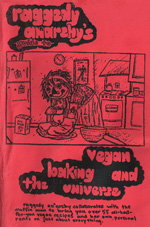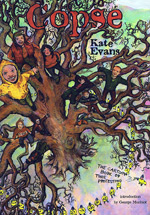» Next Entries
Category
Most Popular
-
Most Popular, Periodicals, Videos
SHAC Revisited
07.02.12 | Permalink | Comments Off on SHAC RevisitedSHAC USA Newsletters, Various Issues (2001-2006, Philadelphia, PA)
Diaries From Hell (2001, Princeton Junction, New Jersey)
The Mandate & Strike Back – Shac Videos (2002, Philadelphia, PA)Today marks the end of a very long journey for me. After more than two years on pre-trial release, eight months on house arrest, three years in prison, and three years on probation, my life is now my own again. As of this morning I no longer need to fill out monthly reports, open my home to law enforcement at any time without probable cause, give the government constant access to my e-mail and social media accounts, or stay confined within the western district of Washington. Best of all, I can return to the kind of organizing that I love and live the life of conscience that I committed myself to so many years ago.
The people who took away my freedom did not do so because I was breaking the law. In fact, they knew that I was not doing so. FBI documents show that I was under almost constant surveillance for years of my life. One field office after another followed me in an attempt to prove that I was “the nexus of illegal [animal and earth liberation related] crime in the Northwest.” They hired informants to befriend me, went through my garbage, paid off my mail carrier to write down the return addresses of my incoming mail, attempted to entrap me, raided my home… the list could go on and on. In the end they had some tapes of lectures I gave advocating forms of hacktivism, and for that speech activity I had my life interrupted for the better part of a decade. An appeals court later said this about my conviction: “Harper’s personal conduct does not cross the line of illegality; to punish him simply on the basis of his political speeches would run afoul of the constitution.” They then went on to uphold my conviction.
If all of the years stolen from me were not about crimes I had committed, what was the government’s motivation? The answer to that question is complex, but I believe the primary concern for the ruling class was that I had begun to see through their illusions of status and power. I know how grandiose- even absurd- that may sound, but please bear with me for just a moment. I was born to working class parents so poor that my first crib was made from a dresser drawer. My mother worked in convenience stores, cleaned homes, and toiled away her health in a frozen foods warehouse. My father was a Vietnam veteran who had survived a fire in the tank he was driving. The horror that he experienced in our government’s imperialist venture in south-east Asia colored every moment of our home life. He returned from his time in the army addicted to drugs, disabled, and in constant pain from shrapnel that was still lodged in his skull. He worked off and on as a mechanic and small time drug dealer. This is the situation that I was raised in, but I am not complaining. My parents loved me and my sister, and despite their mistakes they did their best to help me become a good person. My dad once saw two cops harassing a homeless man outside of a 7-11. They kept asking him if he was “an illegal” and made several references to his race, repeatedly calling him “amigo.” Everyone sat in their cars and watched. Everyone except for my dad, who got out and challenged the police. That moment taught me more than any private school or university ever could have. And while my mom couldn’t always afford the clothing that I selfishly demanded when I was kid, she never bowed down to anyone higher on the social ladder. When some entitled rich kid gave her shit at work, she gave it right back and then some. My heart swells with pride when I think about the warning she got from her bosses at one job: she was required to provide service to police officers and had better begin doing so or else she would be fired. After years of seeing the cops in Eugene, OR beat and harass the underclass she wouldn’t sell them coffee and doughnuts, and continued in her disobedience even when her job was on the line.
I always knew that no matter what my economic status was, that my life was just as valuable as that of a billionaire or a president. I do not care about their titles or money or connections, but I began to care an awful lot about their abuses of power. The wealthy elite, who strip this planet of its life support system, who benefit from racism, sexism, and homophobia, who view our non-human kin as machines for profit, who turn the masses against each other, are made of flesh and blood just like you and I. They want us to believe in corporate personhood because it distracts from the man behind the curtain, the vulnerable decision makers who use towers of steel and concrete to appear more powerful.
This was the threat of Stop Huntingdon Animal Cruelty; we saw through all of the social conditioning that tells us that we are too weak to effect change. We went straight to the homes of those in power, challenged them on their golf courses, screamed at them while they vacationed at summer homes. We were the barbarians at the gate, an alliance of the kind of people who did not usually get heard by the mega-rich of the world. Tooth and nail we went after their profits, and along the way refused to divide and fracture over broken windows or graffiti. Everyone was welcome if they would fight, and I smile so big it hurts when I think of the grandmothers, the punks, the students, and all the other unlikely comrades who marched together in defiance of the false hierarchy that tells us to keep separate and leave the rich to their own devices. We didn’t stay in our place. In fact, we recognized that our place was wherever the hell we chose, and the world of finance and animal abuse was rocked as a result.
This isn’t to say that we were perfect. We made so many mistakes, and we must be accountable for them. As Conflict Gypsy completes its archives of Huntingdon Life Sciences campaign materials we will be critical of the movement’s failures. But today, as I leave Washington to see my family and friends and celebrate my new freedoms, I hope that the spirit of the campaign will infect you. All of us have a revolutionary spark in our hearts, and together these individual sparks provide a beautiful warmth that melts away the cold sterility created by our rulers. Together we can turn the tide of ecocide, of prejudice, of economic and political exploitation. Never, ever believe otherwise.
For animal liberation, for global revolution, and for joy! Yours always,
Josh Harper
July 2nd, 2012




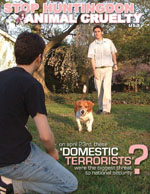

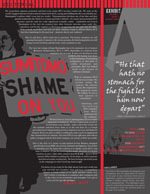


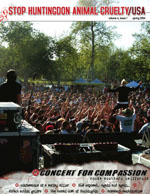

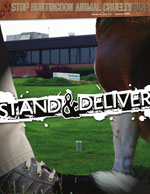


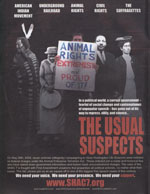



…
-
Books, Most Popular
Against All Odds
06.05.12 | Permalink | Comments Off on Against All OddsAgainst All Odds (1986, London, England.)
Editors note: The TALON Conspiracy endeavors to archive the best, most complete copies available of all publications in our collection. Although Against All Odds had previously been posted on March 14, 2011, we have since found a higher quality copy from the original publisher. Our first posting had been a Canadian reprint with bad generation loss that was also missing several photos printed in the British edition. The Canadian version can still be found here.
Originally published in England as a book 25 years ago, Against All Odds was regularly distributed in North America as a low cost zine. It remains one of the best publications documenting the rise of the Animal Liberation Front and the Animal Liberation Leagues in England.
In many ways, the 1980s was the high water mark of the Animal Liberation movement. In 1984, thousands of people in England participated in direct action against vivisection, staging large scale raids against six labs. Multitudes of people would overwhelm security in broad daylight and remove the oppressed creatures inside, often causing minor damage along the way and taking out valuable footage which was used to grow the movement. Many dozens of arrests followed these raids, but it is arguable that police response was not the cause of death of this mass militant movement taking shape in the UK.
Around this same time we saw the emergence of groups such as the Hunt Retribution Squad and Animal Rights Militia. Rather than rejecting the idea that animal rights activists were fanatics, HRS and ARM embraced that term and seemingly reveled in the negative imagery presented by the media. The Hunt Retribution Squad went so far as to release images of masked activists wielding clubs, chainsaws, and even pavement cutters. The front pages of newspapers widely reported on threats made by HRS to harm hunters if they attacked human opponents of hunting. In the end these counter-assaults never took place, but the damage was done. This type of macho posturing was repellant to many in the movement, and it provided great fodder for the police, courts, and conservative PR teams to use in the war against direct action. Certainly, the few acts of violence taken by the Animal Rights Militia could not outweigh the value of the mass raids and rising public consciousness taking place in England at the time and largely contributed to the recession of a growing struggle for non-human emancipation.
Written in accessible language and unafraid of nuance, its tactical analysis and historical documentation remain valuable to this day. Against All Odds is essential reading for the modern animal liberationist.

-
Most Popular, Periodicals, The Beast
The Beast #1-#10
03.29.12 | Permalink | Comments Off on The Beast #1-#10The Beast #1-#10 (1979-1981. London, England.)
On the 5th of November of 1947 a baby lowland gorilla, stolen from his home and family in West Africa, arrived at the London Zoo. As it was Guy Fawkes day, this newest prisoner was named in his honor. Guy the Gorilla went on to become one of the biggest money makers for his captors, and thousands of visitors would gawk at him, occasionally throwing him sweets to eat. Eventually the candies rotted his teeth, and during a surgery to repair them, he had a heart attack. The budding animal liberation movement in the UK took notice, and a group of people began producing buttons with Guy’s face on them. As the buttons grew in popularity, this small group decided to make a newspaper, and soon The Beast became an insert in International Times. After two such inserts the editors struck out on their own, and soon this beautiful publication was on newsstand racks in England and abroad. It was produced for two short years, and remains one of the best animal liberation (and anti-nuke!) publications of all time.
The Beast began it’s run during a time of global social and political decay. As the voters of the west fell under the spell of charismatic and brutal conservatives, a broad coalition of anti-nuke, anti-fascist, union, conservationist, environmentalist, and animal lib activists entrenched themselves to fight back. As things “hotted up” in the streets, the staff of the magazine followed the action and ideas of an astonishing number of people and groups. The tone in the early issues is optimistic, brave, and intelligent, and offers a fascinating glimpse into the psyche of activists during the era.
The history covered is equally incredible. Articles offer the story of the first animal liberation raid in the United States, the origins of the Hunt Saboteurs Association, and the early days of the Animal Liberation Front. Lost figures, like OG U.S. Hunt Sab and eco-prisoner John Walker, come back to life in these old pages. Important thinkers, such as Henry Spira, Peter Singer, Richard Adams, and Paul Watson were regular contributors. Then, there are the images! Between the full color, glossy covers are amazing pictures of early raids, movement legends, and epic moments on our movement’s timeline. One such photograph, taken in 1980 and shown in issue #10, captures a small group of Animal Liberation League activists standing with banners in a field, bandannas covering their faces, fists in the air. More than 30 years later young people still show that same spark of rebellion and hope, and with our archiving of this magazine, perhaps they will now better understand the revolutionaries who came before them.
When we started Conflict Gypsy one of our dreams was to obtain a complete set of The Beast. After just one year of existence, we have met this goal. As our birthday gift to you we offer the Complete Newsstand Collection of The Beast, perhaps our most important single posting so far…










-
Most Popular, One-off publications
Got the Hollowpoints for the Snitches
03.13.12 | Permalink | Comments Off on Got the Hollowpoints for the SnitchesGot the Hollowpoints for the Snitches (2005, United States)
The greatest weapon in the government’s repressive arsenal is the snitch. These sorry examples of humanity provide big brother with an insider’s view of communities of resistance, spread fear and distrust in revolutionary circles, and gift law enforcement with profiling tools to find likely dissenters in the future. Dealing with this problem is one of the most difficult challenges of a militant movement.
While the title of this zine (Taken from Dr. Dre’s Let Me Ride) may seem like unnecessary posturing, the contents contain an intelligent examination of the historical role of snitches, how other movements have dealt with them, and a rogues gallery complete with contact information for dozens of traitors. Written during the early days of the Green Scare, it offers a look into the mindset of frontline activists during a time when snitching was epidemic.
(NOTE: If you have arrived at this page from one of Corey Wrenn’s blogs please be aware that this document was not produced by or for the Animal Liberation Front as she often claims. Furthermore, be aware that, for better or worse, no one listed inside has been subjected to violence as a result of their listing.)
…
-
Most Popular, One-off publications
Raggedy Anarchy’s Guide to Vegan Baking and the Universe
02.23.12 | Permalink | Comments Off on Raggedy Anarchy’s Guide to Vegan Baking and the UniverseRaggedy Anarchy’s Guide to Vegan Baking and the Universe (1989? Carmichael, CA)
Consumer culture is rampant in its appropriation and assimilation of radical ideas, taking things that were once revolutionary (including the word “revolutionary” itself!) and turning them into products to be purchased or new forms of advertising. DIY Skater culture became a vehicle for hocking Mountain Dew, Tylenol, and Nike shoes, hardcore music influenced the crappy, commercial “now I’m singing, now I’m yelling” garbage heard on the radio today, and in a world where sorority girls have knuckle tattoos and think Discharge is a clothing brand, can punk still be a threat? These subcultures may have never truly threatened the system, but at one time they provided a safe space from it, and in that space some truly liberatory ideas flourished.
If you have grown up in a world where vegan cookies are sold at supermarkets and every animal free product imaginable can be bought on the internet, veganism might just seem to be one more compartment in the consumerist toolbox. But there was a time when this wasn’t so. In the early days of veganism you had to be seditious to even consider such a thing. It was unheard of, and given cultural resistance to the changing of food choices, it was also rebellious. While many health oriented and religious groups had advocated an animal free diet, animal rights oriented veganism was uncharted territory. (And at times unwelcome in the animal rights community! Many New Zealand anti-vivisection societies ran newsletter articles in the late 70’s and early 80’s warning of possible “infiltration” efforts by vegans!) On it’s path to mainstream acceptance, the first pioneering steps were taken very often by punks, hardcore kids, and others existing on the fringes.
Because being a vegan was such a new concept at the time, people simply did not know how to do it. Recipes and helpful hints began spreading through album liner notes, self published cook-zines, and the network of all ages venues that began springing up in the late 1970s. Making veganism accessible to the young and poor brought animal rights into communities that were already resistant to cultural norms, and soon animal liberation joined the roster of causes tattooed on the hearts of misfits everywhere. Diets were changed, but more importantly, action was taken. For proof we present Raggedy Anarchy, an amazing cook-zine that was hugely influential on the likes of Isa Moskowitz and others, written by a young punk and hunt saboteur from California.
Raggedy Anarchy will help you make delicious cakes, but it will also spark your desire to subvert the omnicidal paradigm! Sometimes funny, sometimes introspective, and always inspiring, we post this classic in the hopes of making Snacktivism a threat again and convincing our readers to “bake for themselves what tomorrow never brings!”
…
-
Most Popular, Site news & updates
In Memory of Jill Phipps
02.01.12 | Permalink | Comments Off on In Memory of Jill PhippsIn memory of Jill Phipps.
On February 1st of 1995 our movement lost one of it’s shining lights to the tires of a truck transporting baby cows to slaughter. Jill Phipps, a former member of the Eastern Animal Liberation League, was trying to block the road to prevent the murder of those young calves when the driver chose to run her over.
Across the world people were outraged, and even mainstream publications in England ran articles with headlines proclaiming Jill a martyr- but to think of her in that light is an over simplification. Jill was the smiling face at street stalls who introduced many people to the concept of animals rights, a second generation militant in a family of deeply committed liberationists, a participant in raids that caused economic damage to those who harmed non-humans, and a mother who stood trial for ALF activity while she was still pregnant. By all accounts she was a sincere, friendly, and inspiring person whose willingness to sacrifice for the oppressed knew no bounds. If we are ever to bring about Jill’s dream of a world free from speciesism we must all aspire to emulate her level of commitment, passion, and caring.
Every year on the first day of February animal rights activists all over the world remember Jill, but remembering is not enough. A faithful tribute to our fallen comrade requires action, and we ask that our readers dedicate their activism and resistance this month to Jill Phipps.






-
Books, Most Popular
Animal Liberation: A Graphic Guide
11.24.11 | Permalink | Comments Off on Animal Liberation: A Graphic GuideAnimal Liberation: A Graphic Guide (1987, London, England.)
Published twelve years after Singer’s groundbreaking book, Animal Liberation, this graphic guide is lesser known but still influential. Part of the reason why it is lesser known is that this book is not known for the commentary provided by Prof Singer, or even Prof. Gruen, but instead it’s influence can almost solely be charted to the breath taking artwork done by David Hine.
Although the images in this book have been reprinted countless times, in publications all over the world, little attention in animal liberation circles has ever been paid to Hine the illustrator. Hine was commissioned to do the guide in 1987, alongside another publication critical of the “Space Wars” (Space Wars: A Graphic Guide). The career that Hine would go on to have after 1987 is interesting to say the least. Hine is now considered an iconic British comic artist – with an impressive thirty year independent publication career alongside drawing and/or writing for household name comic series such as; Transformers, X-Men, Spiderman, Spawn and Batman and Robin. Recently, Hine has also made waves in the comic book industry by introducing an Algerian Muslim super hero figure, Nightrunner, in his Dark Knight series that was set in France.
Hine’s impressive career explains the comic-book esque structure of the guide as well as the absolutely amazing skills on display. Twenty four years later and there is simply no comprehensive visual rival to the work of this guide. Conflict Gypsy is beyond excited to host this publication here, to trace and celebrate it’s influence, and to hopefully inspire all of those illustrators/designers/drawists out there currently fighting for animal liberation.

…
-
Books, Most Popular
The Black Cat Sabotage Handbook
10.31.11 | Permalink | Comments Off on The Black Cat Sabotage HandbookThe Black Cat Sabotage Handbook, 3rd edition (1996, Eugene, OR.)
When I was a kid the world didn’t have the sort of instant gratification now expected for all transactions, and thank goodness. You can really appreciate the value of something more once you’ve clipped five proof of purchases, put them into an envelope, mailed them away, and waited 6 to 8 weeks for your Zartan action figure to arrive. Distribution for the Black Cat Sabotage book worked the same way – you clipped an ad out of a zine and mailed it in along with concealed cash. A few months later a copy showed up in a nondescript envelope. I still remember when mine was delivered…
My first copy of Black Cat left me feeling like I was involved in some sort of conspiracy just turning the pages. Sure, most of it was reprints that I had already seen before, but the layout, the graphics, and the text all seemed to carry the message that action was urgent and that the enemy was watching. (Of course, we were all sending envelopes with our return addresses to the same damn PO Box in Eugene, so if anyone was watching they already knew who we were!) At the time I didn’t know who was publishing or distributing it, but rumors eventually surfaced in the mid 2000’s that the book was compiled by Bill Rogers, an accused Earth Liberation Front member who took his own life behind bars in 2005. In his suicide note he said that his death was a “Jail break,” and as he slowly suffocated himself with a plastic bag he gripped one hand into a fist, and with the other, extended his middle finger.
I only met Bill one or two times and did not get to know him well, but since his death I have heard many complicated things about him. From what I gather he was at times heroic, but had some serious, perhaps unforgivable flaws that should not be ignored. In that respect he is like the book that he was rumored to have clipped together and sent out anonymously. The Black Cat Sabotage Handbook contains some good bits of information, some serious inspiration, and some decent arguments for the use of sabotage and even violence. Likewise, it also contains some foolhardy nonsense that could get someone jailed or killed for little positive gain. The cover shouts, “BEWARE!” and smart readers will heed that advice.
In closing, here is to Bill. He was a man I can best respect by keeping off a pedestal. I can not deny that many of the stories about him are disconcerting, but I also can not deny the beauty of his attempts to spark a revolution against industrialism. As his friends sat shivering and complaining in a car, it was Bill who trekked alone through snow, uphill and burdened with the weight of gallons of fuel to set a fire that would announce to millions the existence of the Earth Liberation Front. That speaks volumes about his fighting spirit, and his wild drive to right the wrongs our species has perpetrated. His death saddens me, but something tells me that someone so intent on freeing others would not have done well spending decades behind bars- perhaps in that sense his “jail break” really was a form of escape. He will be remembered as a warrior.
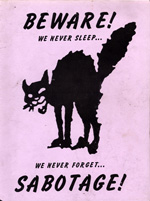
…
-
Most Popular, One-off publications
Earth First! Direct Action Manual 1st Edition
07.25.11 | Permalink | Comments Off on Earth First! Direct Action Manual 1st EditionEarth First! Direct Action Manual 1st Edition (1997, Eugene, OR. USA)
As the militant environmental movement entered the mid 90’s it was mired in internal conflict about tactics, the relevance of other causes to wilderness defense, and whether or not violence was justifiable in solidarity with wild creatures and ecosystems. Despite this infighting groups like Earth First! managed to win some sizable campaigns using blockading and civil disobedience techniques.
As word spread about new tactics developing in the forests of Oregon and northern California, there was a sudden clamor from other activist groups to build their own lockboxes, barrels, tripods, and “black bears.” The DAM Collective answered this demand by printing the Earth First! Direct Action manual, a nicely illustrated and bound book containing how-to instructions on scouting, security, dealing with police, and setting up voluntary arrest scenarios utilizing “lock downs.”
But the Direct Action manual was more than that. It also contained short articles about Critical Mass, The Animal Liberation Front, varying theories on non-violence as an ethic vs. a tactical choice, and plenty of discussion of practical security measures for activists. It not only put the power of blockades into the hands of the masses, it also put minds into motion to consider the best ways forward for the radical environmental movement.
Conflict Gypsy has obtained a copy of the first edition of the Direct Action Manual (Commonly referred to at the time as the D.A.M.) for posting on the site, but would love to also post a copy of the second edition. Please contact us at conflictgypsy (at) gmail (dot) com if you can loan us one for scanning!
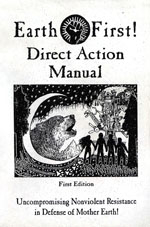
…
-
Books, Most Popular
Copse
05.29.11 | Permalink | Comments Off on CopseCopse (1998, Kate Evans, Chippenham, England.)
“The direct action campaign against road building in Britain is the most successful revolutionary movement in Western Europe in the Second half of the 20th Century. Never before in this period have such radical aims been so comprehensively achieved in so short a time. Never before has a central component of government policy, to which billions of pounds had already been committed reversed, without the need of a change of government, by citizen politics. The humble, impoverished people who fought and won this war have plenty to be proud of.” -George Monbiot, from the introduction.
Sometimes a social ill can become so prevalent that it is sewn into the fabric of our society, normal in all senses, and so common that invisibility is reached. So it is with the car. Whether fueled by gasoline or electricity, bio-diesel or hydrogen, the automobile is one of the most destructive things on earth. Cars emit more than half the world’s air pollution, and kill more animals every year than the fur and vivisection industries combined. But that is only the beginning of the problem. You see, cars require roads, and they travel on them at deadly speeds. What this means is that the streets– a commons where people once gathered– are no longer a place to live and interact, but a place to pass through. The automobile has completely altered our social structure and harmed the ability of normal people to meet and share their discontent with the existing order. Roads now take up more than 1/3rd of most cities, and when parking, garages, gas stations, and other things necessary to feed and house cars are taken into consideration, more than half of our urban space is dedicated to traveling metal boxes. This is an ecological and social catastrophe that goes largely ignored even amongst those who care about human community, wilderness, and non-human animals.
But, it wasn’t always this way. Less than 20 years ago thousands of people fought against the building of new roads in England and elsewhere, and the actions which they undertook are greatly inspiring. From complex villages of tree sits and blockading devices to mass daylight arsons, the anti-roads movement was tremendously successful in preventing the furtherance of car culture and its corollary social and environmental impact.
There were many attempts at documenting this exciting people’s struggle, but none of them were quite as fun as Kate Evans’ Copse. Comprised of interviews, photographs, essays, and plenty of comics, Copse distilled the spirit of the protests onto each page. Part history lesson, part graphic novel, this book is a great starting place to understanding an important piece of the recent history of mass direct action.
…
» Next Entries

